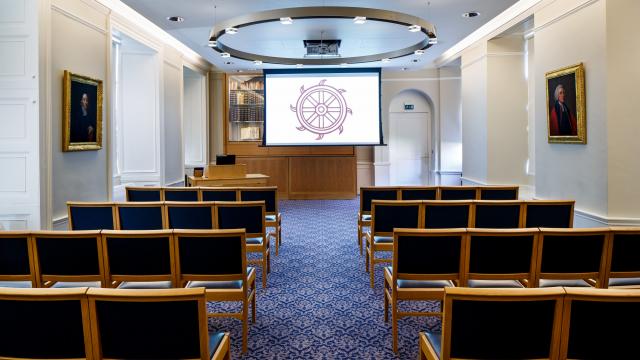
An Emeritus Fellow of St Catharine’s has dedicated his career to restoring the ozone layer. Formerly the Co-Director of the Centre for Atmospheric Science in Cambridge and based at the University’s Yusuf Hamied Department of Chemistry, Professor John Pyle CBE (1986) has studied the depletion of the stratospheric ozone layer and supported the ‘Montreal Protocol on Substances that Deplete the Ozone Layer’ (commonly known as the Montreal Protocol). We recently caught up with Professor Pyle to discuss his latest work and his reflections on the Montreal Protocol’s first 35 years.
You have been involved in the Montreal Protocol for almost as long as you’ve been part of the Fellowship of St Catharine’s – how did that come about?
“In 1985, the year before I joined Catz, scientists first learnt about abnormally low concentrations of ozone in our atmosphere. The Montreal Protocol was signed in 1987 to protect the ozone layer by phasing out numerous substances that are responsible for ozone depletion.
“Article 6 of the Montreal Protocol called for ‘appropriate panels of experts’ – now known as the Scientific Assessment Panel, the Environmental Effects Assessment Panel and the Technology and Economic Assessment Panel – to assess and report on the latest available scientific, environmental, technical and economic information ‘beginning in 1990, and at least every four years thereafter’.
“These reports assess evidence on the state of the ozone layer, identify the impact of any interventions and, ultimately, inform decisions taken by United Nations’ representatives about whether to amend or adjust the Protocol at all. I am proud to have been involved in all the reports ever produced by the Scientific Assessment Panel, first as an author and as one of the four international co-chairs of the Panel since 2008.”
The Scientific Assessment Panel published its latest report in January 2023. What were the highlights for you?
“Our new report confirmed that the Montreal Protocol has been massively successful: nearly 99 per cent of banned ozone-depleting substances have been phased out as required by the Montreal Protocol. This has led to a notable recovery of the protective ozone layer in the upper stratosphere and decreased human exposure to harmful ultraviolet rays from the sun since 2000. If current policies remain in place, the layer is expected to return to 1980 levels by about mid-century.
“For the first time in this report, the Scientific Assessment Panel warned of the unintended impacts on the ozone layer of new technologies, such as geoengineering designed in response to climate change. We examined the potential effects of the intentional addition of aerosols into the stratosphere, known as a stratospheric aerosol injection, and concluded that this technology could inadvertently affect stratospheric temperatures, circulation and ozone levels.”
With the United Nations’ Secretary-General António Guterres calling the restoration of the ozone layer “an encouraging example of what the world can achieve when we work together”, what else can we learn from the Montreal Protocol that could apply to climate change?
“The Montreal Protocol is incredibly important in our response to climate change. First, the chemicals originally regulated by the Montreal Protocol – chlorofluorocarbons (CFCs) – aren’t just ozone depleting substances; they contribute to the Greenhouse Effect too. I am confident that climate change forecasts would be much worse if the world had not adopted the Montreal Protocol.
“Crucially, the Montreal Protocol represents an important landmark: the first multilateral environmental agreement to be ratified by every country in the United Nations. The Intergovernmental Panel on Climate Change, the United Nations body for assessing the science related to climate change, has been built on the model established by the Montreal Protocol.
“It is also worth noting that the Protocol started off relatively modestly and has been strengthened incrementally over the years to reflect available evidence. An important example is the amendment introduced in 2016 when it became clear that the hydrofluorocarbons (HFCs) used as substitutes for CFCs, while not depleting the ozone layer, were also greenhouse gases. After years of incremental changes, the Protocol now regulates the consumption and production of nearly 100 man-made chemicals, on the basis of their effects on the ozone layer and/or global warming. It is possible to make real progress through incremental change!
“I am also reminded that the Protocol was accompanied by a multilateral fund fairly early on. This was a funding mechanism for wealthier countries to support change in other countries. Recent discussions at the Sharm el-Sheikh Climate Change Conference (COP 27) recognised how important this will be if the world is to respond effectively to the threat of climate change.
“In a nutshell, with evidence, funding and goodwill like we had on CFCs, movements can make a measurable difference to the world.”






